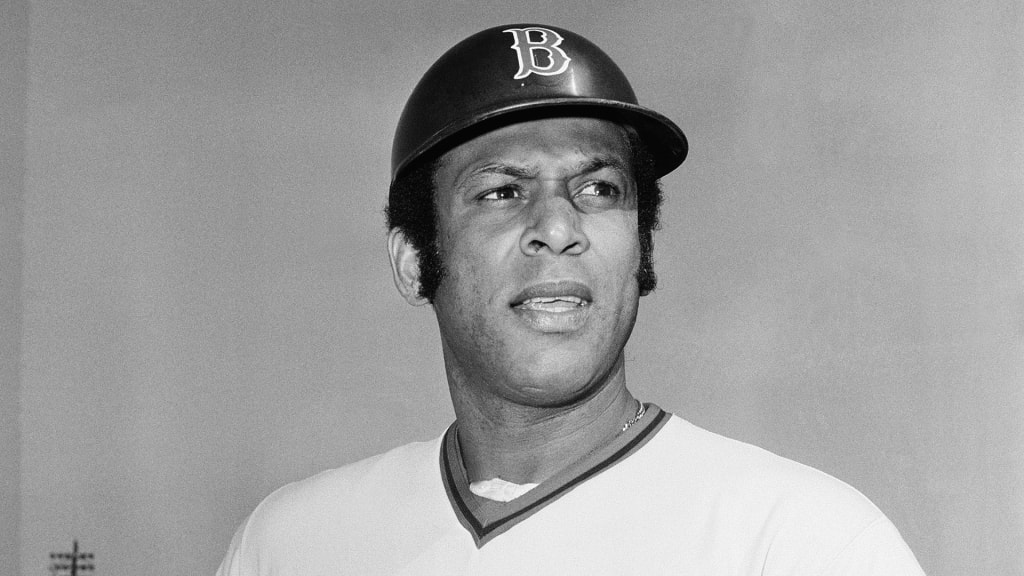
For all the legends defined by their greatness with the Red Sox, there are some other standouts who had a proverbial cup of coffee in Boston. These are players you think of mainly for their greatness with other franchises.
We came up with the top 10 who best fit this list, which had one qualification: The player could only have spent one season (or a partial season) with Boston.
Some of these players had a memorable and productive stop, others had stints so uneventful you might have forgotten they even played for the Red Sox.
Adrián Beltré, 2010
Diminished by a deteriorating right hip injury, Mike Lowell was nearing the end of his time with the Red Sox, retiring at the end of the 2010 season. This left general manager Theo Epstein in search of a third baseman. Enter Beltré, who came aboard on a one-year, $9 million deal his agent Scott Boras referred to as a "pillow contract." It was in Boston that Beltré bounced back from a largely mediocre five-year run with the Mariners and got his career back on a Hall of Fame track. Beltré was a force for a Boston team that likely would have made the playoffs if not for injuries to Dustin Pedroia, Kevin Youkilis and Josh Beckett.
Though Beltré wanted to re-sign with the Red Sox, Epstein instead made a blockbuster deal with the Padres that brought Adrián González to Boston and moved Youkilis to third base. Beltré signed with the Rangers, with whom he finished his tremendous career in 2018.
Orlando Cepeda, 1973
Not only is Cepeda a Hall of Famer, but he is also the answer to the following trivia question: "Who was the first DH for the Boston Red Sox?"
Cepeda had a solid (20 homers, 86 RBIs, .793 OPS) lone season for the Sox in 1973. During Spring Training of '74, Cepeda was released by Boston and played his final Major League season with the Royals.
Yoenis Céspedes, 2014
The Red Sox started the 2014 season hoping to repeat as World Series champions. By midseason, they chose to rebuild on the fly. Jon Lester, John Lackey, Andrew Miller, Jonny Gomes and Stephen Drew were traded July 31. The Lester deal brought Cespedes and his big bat to the Red Sox. It was an uneventful 51-game stint for Cespedes for a Boston team that wasn't in contention.
Rather than bringing Cespedes back in 2015, Boston instead traded the slugger to the Tigers for Rick Porcello. That wound up being a strong move, as Porcello won the American League Cy Young Award in '16, and was a key contributor to the team's '18 title run. Cespedes was dealt midway through the '15 season to the Mets, and he helped them get to the World Series.
Bartolo Colon, 2008
Yes, Colon played for the Red Sox in 2008. You probably barely remember it. He signed in Spring Training and pitched just seven games that season, finishing 4-2 with a 3.92 ERA. On June 16 that year, Colon pulled a muscle taking a swing in an Interleague game at Philadelphia. He pitched just once more for Boston. When the team offered him a chance to pitch in the bullpen in the playoffs, Colon decided to go home instead. At that point, it sure seemed like Colon's career was winding down. He was still pitching a decade later.
David Cone, 2001
A leader and a pitching force during the Yankees' dynasty from 1996-2000, Cone was looking for work in '01. Red Sox general manager Dan Duquette signed him to a one-year deal. Cone had a decent season (9-7, 4.31 ERA) that represented a nice bounceback from the struggles he faced in his final year with the Yankees. But it wasn't enough for a '01 Red Sox team that had major injuries to icons Pedro Martinez and Nomar Garciaparra and serious chemistry issues. One day, when the Boston media was having a field day regarding the latest controversy, Cone quipped, "The Bronx Zoo has nothing on this place."
Rickey Henderson, 2002
Henderson played for the Red Sox? He sure did. The year was 2002, and Henderson was a backup for the first time in his career. Henderson stole just eight of his MLB-record 1,406 bases for Boston while playing in 72 games. On the final day of that regular season, Red Sox ownership presented Henderson with a car during a somewhat awkward ceremony. But '02 wasn't quite the last ride for Henderson. He played 30 games for the Dodgers in '03 and at last called it a career. Widely considered the finest leadoff man of all-time, Henderson went into the Hall of Fame in 2009.
Kevin Mitchell, 1996
When the Mets were staging their epic rally against the Red Sox in Game 6 of the 1986 World Series, Mitchell was a rookie in the clubhouse. Manager Davey Johnson got word to him that he was needed as a pinch-hitter. Mitchell came through with a key single that helped set up the madness that would follow.
That made it a strange feeling when the joined Boston 10 years later. The brief stint lasted just 27 games, with Mitchell hitting .304. The 1989 National League MVP Award winner was traded from Boston to the Reds that July.
Jamie Moyer, 1996
The soft-throwing lefty signed as a free agent in January and was a swingman, going 7-1 with a 4.50 ERA. The Red Sox were having a nondescript season and traded Moyer to the Mariners in July. It was hard to know at the time that Moyer would evolve into one of the most dependable starters in Mariners history. Moyer also helped pitch the Phillies to a World Series championship in 2008. By the time he finally retired, he was 49 -- yes, 49 -- years old. Moyer won 269 career games.
Hideo Nomo, 2001
You'd be hard-pressed to find a pitcher who had a more spectacular debut for the Red Sox than Nomo, who fired a no-hitter at Camden Yards against the Orioles in the second game of the regular season.
Nomo (13-10, 4.50 ERA) didn't match the top form he had earlier in his career with the Dodgers, but he did lead the AL with 220 strikeouts in 2001. After his one-and-done season in Boston, Nomo reunited with the Dodgers and sparkled, going 16-6 with a 3.39 ERA in '02.
Tom Seaver, 1986
When Lou Gorman traded Steve Lyons to the White Sox for the legendary Seaver on June 29, 1986, some media members dubbed the deal "Psycho for Cy Young." Tom Terrific was 5-7 with a 3.80 ERA in 16 starts for the Red Sox, but he turned in a collection of solid performances during the pennant race and provided stability behind Roger Clemens, Bruce Hurst and Oil Can Boyd in the rotation.
Unfortunately, Seaver injured his calf in a Sept. 19 start at Toronto and remained inactive in the postseason. Some wonder if Seaver could have made a difference in the World Series against the Mets had he been able to start Game 4 instead of Al Nipper. Seaver attempted a comeback with the Mets in 1987, but Boston was the last team he ever pitched for.


